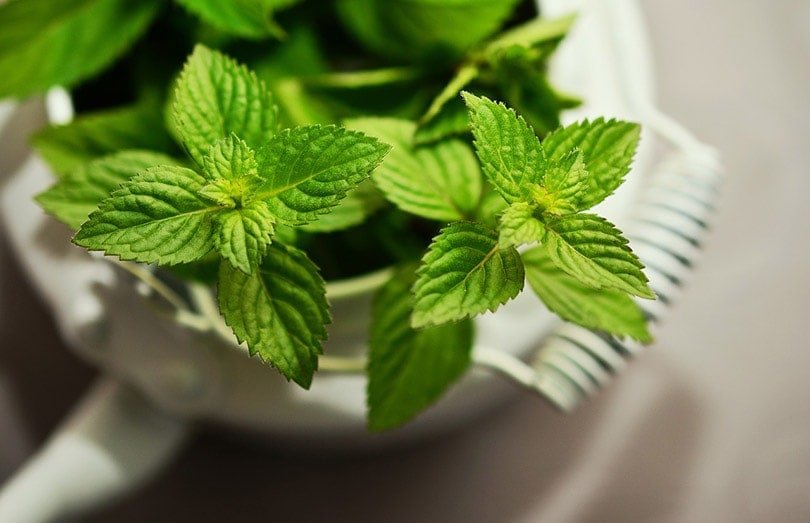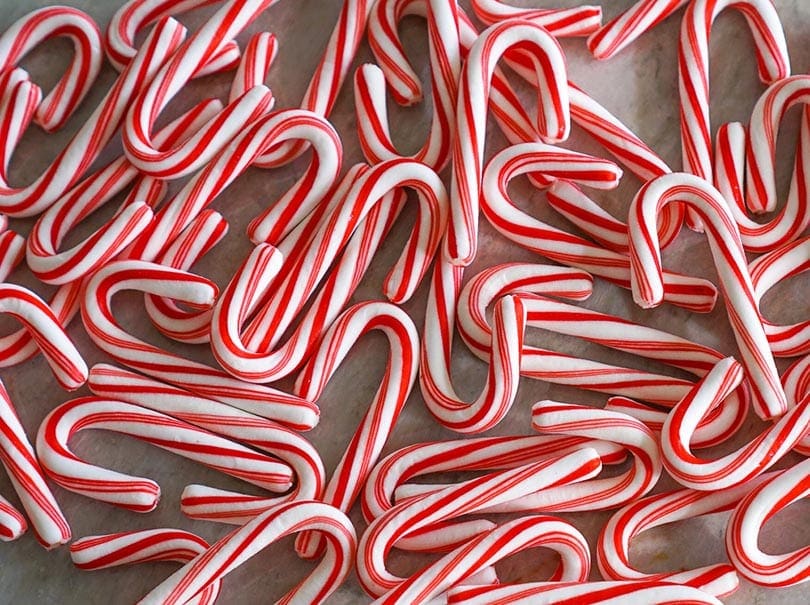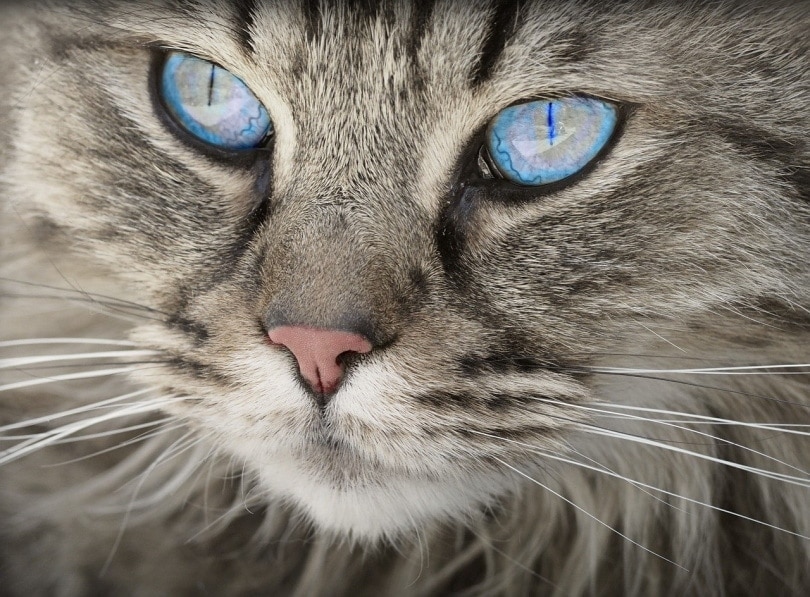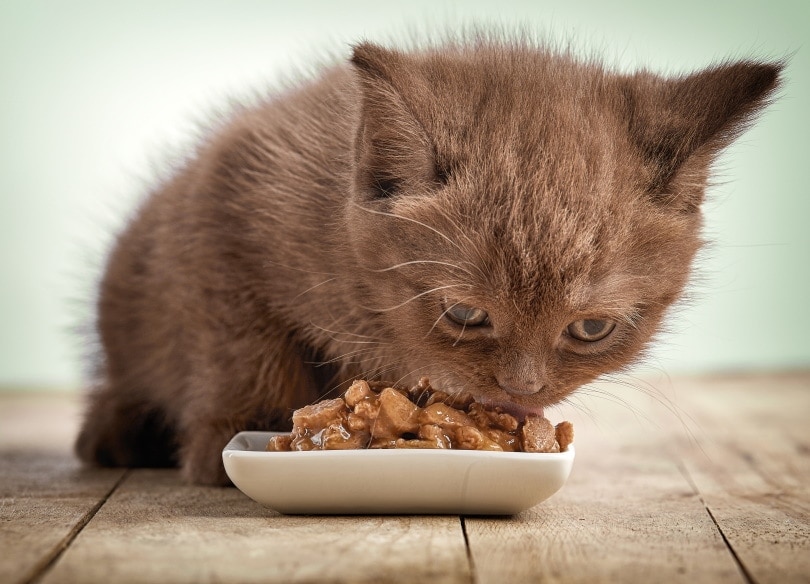Can Cats Eat Peppermint? Nutrition Facts & FAQ
Updated on

Peppermint is a fun treat that most of us enjoy during the holiday season, if not year-round. There are peppermint candies, teas, cakes, bread, and other goodies that we can eat to satisfy our craving for this delightfully fresh flavor. Some cats tend to show an interest in peppermint and mint products too, so you may wonder whether it’s okay for your cat to snack on a little peppermint candy or nibble a mint plant in the kitchen occasionally.
The short answer is that no, cats should not eat peppermint foods or mint plants. Keep reading to learn more about why cats should not eat peppermint foods or mint plants and other important information about the topic.
Why Are Cats Attracted to the Smell of Mint?
The reason that cats tend to be attracted to peppermint foods and mint plants is that mint smells similar to catnip. After all, catnip is part of the mint family. Cats don’t seem to be able to tell the difference between peppermint, mint, and catnip overall. They not only like the smell but also the taste.
They especially love the texture of mint leaves, so people should not be surprised to see their cat chewing on a mint plant or mint leaves left on the counter.

Why Are Peppermint Foods and Mint Plants Dangerous to Cats?
While the scent of peppermint foods and mint plants is not dangerous to your cat, the components inside these things are the problem. Mint and peppermint oils are toxic to cats. When ingested, the components in the oils result in illnesses such as diarrhea, nausea, and vomiting. If too much peppermint or mint oil is ingested, it could even lead to death.
The mint plant naturally contains mint oil, which is why it is listed as a toxic plant on the ASPCA website. Many peppermint food products are made with peppermint oil. Therefore, your cat should stay away from all forms of mint and peppermint to ensure that they do not succumb to illness or death. Eating a tiny amount of mint or peppermint oil may not cause serious side effects, but it can easily cause digestive upset.
Some Peppermint Foods Might Be Okay
It used to be that peppermint foods like candy canes and cakes were made with peppermint oil, but that is not always the case today. Some candy canes and peppermint foods are made with artificial peppermint flavor, which does not include the actual oil of the peppermint plant. However, you must read the ingredients carefully to make sure that peppermint oil is not listed.
To be safe, it is best to keep your cat away from all peppermint food products unless you make the products yourself using peppermint flavor instead of peppermint oil.

Essential Oils Are a No-Go
Mint and peppermint essential oils are not healthy for cats. Even diffusing these oils can cause health problems. If you do use peppermint or mint essential oil for anything, keep it in a contained area that your cat cannot access. If you put these oils on your skin, avoid physical contact with your kitty until the oil has completely absorbed into your skin or until you thoroughly wipe it off.
How to Grow Mint While Keeping Your Cat Safe
It is possible to grow mint plants while keeping your cat safe from harm. First, you should grow them outside if your cat lives strictly indoors. This will help ensure that your cat never gets even close to a mint plant throughout the day or at night when you are not around to supervise. If your cat goes outside, you should grow your mint plants in hanging pots and hang them from your house’s eaves where your cat cannot get to them.
You can grow mint plants indoors, but again, they should hang from pots in places where your cat cannot reach them. The corners of rooms, above the window in the kitchen, and in the garage are great places to hang mint plants from the ceiling. If you do not want to hang your mint plants, choose rooms in your home where your cat is not allowed to spend time. The bathroom and bedrooms are decent options.
What to Do If Your Cat Eats Peppermint or Mint
If you find that your cat has nibbled on a mint leaf or snagged peppermint candy, watch for signs of gastrointestinal distress. Make sure that plenty of clean water is available, and ensure that all mint and peppermint items are no longer accessible to them. If your cat starts to vomit or shows signs of distress, call your veterinarian immediately for guidance.
Now that you know what you can safely feed your cat, it’s just as important to find a bowl that supports their health and well-being. With whisker-friendly bowls and a wide tray to catch any spills, our Hepper NomNom Cat Bowl is our favorite option.
In Conclusion
To ensure their health and safety, our cats should never have access to mint or peppermint plants or peppermint foods. They should also never be around peppermint and mint essential oils. Sometimes, though, cats can get into some mint or peppermint products regardless of our efforts to keep them away.
If this happens, keep an eye on your cat for symptoms of toxicity. If your cat does show signs of distress, contact your veterinarian right away. With any luck, though, your cat will show no to few symptoms and you can avoid a visit to the vet.
- See also: 10 Best Catnips for Cats
Featured Image Credit: congerdesign, Pixabay














